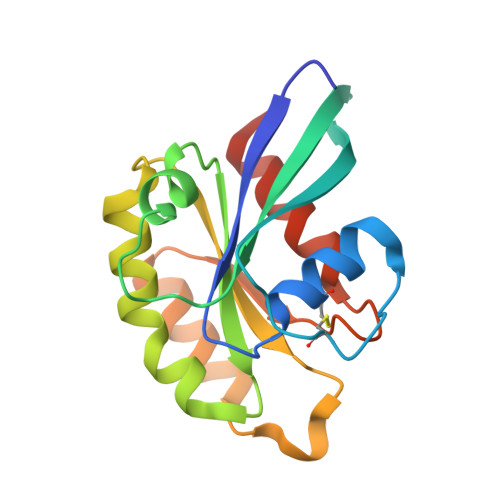Structure-Function Analyses of the Interactions between Rab11 and Rab14 Small Gtpases with Their Shared Effector Rab Coupling Protein (Rcp).
Lall, P., Lindsay, A.J., Hanscom, S., Kecman, T., Taglauer, E.S., Mcveigh, U.M., Franklin, E., Mccaffrey, M.W., Khan, A.R.(2015) J Biological Chem 290: 18817
- PubMed: 26032412
- DOI: https://doi.org/10.1074/jbc.M114.612366
- Primary Citation of Related Structures:
4D0G - PubMed Abstract:
Rab GTPases recruit effector proteins, via their GTP-dependent switch regions, to distinct subcellular compartments. Rab11 and Rab25 are closely related small GTPases that bind to common effectors termed the Rab11 family of interacting proteins (FIPs). The FIPs are organized into two subclasses (class I and class II) based on sequence and domain organization, and both subclasses contain a highly conserved Rab-binding domain at their C termini. Yeast two-hybrid and biochemical studies have revealed that the more distantly related Rab14 also interacts with class I FIPs. Here, we perform detailed structural, thermodynamic, and cellular analyses of the interactions between Rab14 and one of the class I FIPs, the Rab-coupling protein (RCP), to clarify the molecular aspects of the interaction. We find that Rab14 indeed binds to RCP, albeit with reduced affinity relative to conventional Rab11-FIP and Rab25-FIP complexes. However, in vivo, Rab11 recruits RCP onto biological membranes. Furthermore, biophysical analyses reveal a noncanonical 1:2 stoichiometry between Rab14-RCP in dilute solutions, in contrast to Rab11/25 complexes. The structure of Rab14-RCP reveals that Rab14 interacts with the canonical Rab-binding domain and also provides insight into the unusual properties of the complex. Finally, we show that both the Rab coupling protein and Rab14 function in neuritogenesis.
- From the School of Biochemistry and Immunology, Trinity College, Dublin 2 and.
Organizational Affiliation:



















